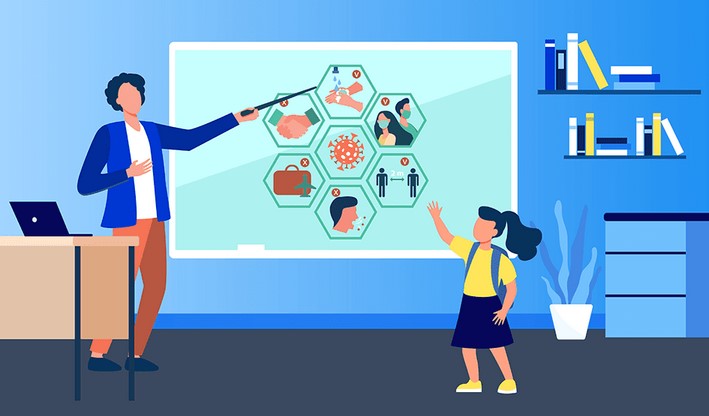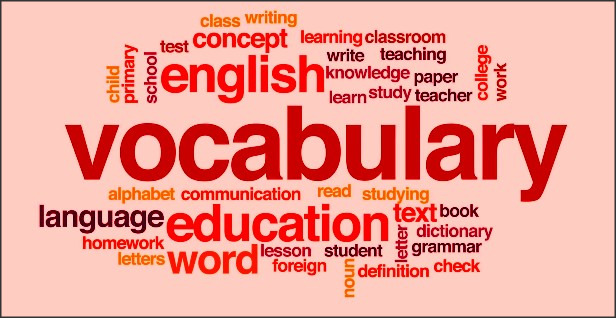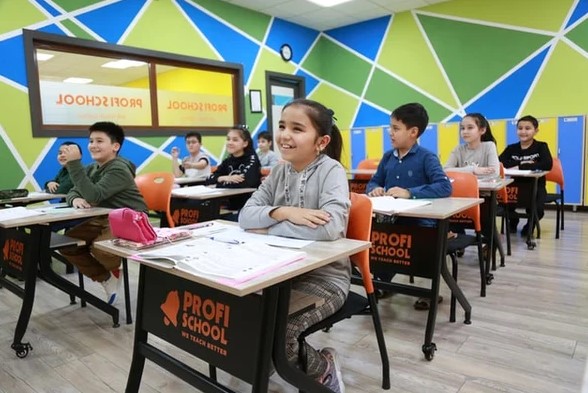Category Archives: Education
Teacher Posters: Decorating Your Classroom with Inspiration

Source : https://i.etsystatic.com
Creating an inspiring and engaging classroom environment is a cornerstone of effective teaching. A well-decorated space not only enhances the visual appeal of the room but also fosters a sense of motivation and enthusiasm among students. Teacher posters play a pivotal role in this transformation, offering a blend of educational content, encouragement, and creative expression. From motivational quotes to subject-specific infographics, these visual aids can help educators set the tone for learning while reinforcing key messages. This article explores how to utilize teacher posters to create a vibrant, purposeful classroom that stimulates both teaching and learning.
The Importance of Visual Elements in Learning
How Visual Aids Enhance Engagement
Visual learning is a powerful tool for understanding and retention. Research shows that incorporating visual aids like posters into teaching strategies can improve student comprehension and memory. Teacher posters, with their bright colors and compelling designs, capture students’ attention and provide a focal point for lessons. For instance, a poster featuring a historical timeline can serve as a reference during history lessons, while an illustrated periodic table can simplify complex chemistry concepts.
Moreover, these posters can break the monotony of plain walls, making the classroom an inviting space for students. When students feel comfortable and engaged in their surroundings, they are more likely to participate actively in lessons.
Encouraging Positive Behaviors
Beyond academic content, teacher posters can promote positive behaviors and classroom culture. Posters with messages like “Respect Each Other” or “Mistakes Help Us Learn” remind students of the values that underpin a healthy learning environment. By placing such posters in prominent areas, teachers can reinforce these principles daily, creating a supportive and respectful atmosphere.
Creative Ideas for Using Teacher Posters
Aligning Posters with Curriculum Goals
One of the most effective ways to use teacher posters is by aligning them with the curriculum. For example, math classrooms can benefit from posters featuring multiplication tables, geometric formulas, or real-world applications of math. In language arts, posters showcasing literary devices, grammar rules, or famous authors can enhance the learning experience.
Educators can also use seasonal or thematic posters to align with specific lessons. For instance, during Earth Week, a classroom could feature posters about sustainability and environmental conservation. This not only keeps the content fresh but also helps students connect lessons to real-world events.
Creating Interactive Learning Spaces
Teacher posters can go beyond static displays to become interactive tools for learning. Consider using writable posters or laminated charts where students can add their input. For example, a “Word of the Day” poster in an English classroom can encourage vocabulary building. Similarly, a “What We Learned Today” board allows students to reflect and summarize key takeaways from the day’s lesson.
Building an Inspiring Classroom Atmosphere
Fostering a Growth Mindset
One of the most impactful ways to use teacher posters is by fostering a growth mindset among students. Posters with phrases like “You Can Do Hard Things” or “Every Expert Was Once a Beginner” remind students that challenges are opportunities for growth. These messages can be particularly effective when displayed in areas where students are likely to face difficulties, such as near whiteboards or study corners.
Celebrating Diversity and Inclusion
A diverse and inclusive classroom celebrates every student’s uniqueness. Posters featuring messages like “Celebrate Differences” or showcasing leaders from various cultures and backgrounds can make students feel seen and valued. These visual cues help build a sense of belonging and encourage respect for diversity among peers.
Personalizing the Space
Finally, involving students in the decoration process can make the classroom feel like a shared space. Teachers can invite students to create their own posters or contribute ideas for themes and designs. This collaborative effort not only enhances the aesthetics of the room but also boosts student ownership and pride in their learning environment.
Conclusion
Decorating a classroom with purpose and creativity can have a profound impact on the educational experience. By integrating teacher posters, educators can transform their spaces into hubs of inspiration, motivation, and learning. These visual aids serve as constant reminders of important lessons, values, and goals, enriching both the academic and emotional lives of students. Whether you’re emphasizing curriculum content, promoting positive behaviors, or fostering an inclusive atmosphere, teacher posters offer endless possibilities to create an engaging and impactful learning environment.
Animated Learning: Engaging Visuals in Educational Content

Source : https://ideaexplainers.com
In today’s rapidly evolving digital landscape, the integration of animated learning tools in education has proven to be a game-changer. These visually dynamic approaches captivate learners’ attention, making even complex concepts easier to grasp. With the increasing reliance on digital platforms, animated visuals are becoming indispensable in educational content, offering a fresh and engaging way to learn. From simplifying abstract topics to enhancing retention rates, animated learning caters to diverse educational needs and learning styles, bridging the gap between traditional and modern teaching methodologies.
The Role of Animation in Education
Animation has long been associated with entertainment, but its potential as an educational tool is unparalleled. Animated content appeals to learners’ visual and auditory senses simultaneously, facilitating a deeper understanding of the subject matter. Whether it’s a 3D simulation of the human circulatory system or an animated timeline of historical events, the dynamic nature of animations brings lessons to life, sparking curiosity and interest in students of all ages.
Benefits of Animated Learning
- Enhanced Comprehension:
Animation simplifies complex ideas, making them more accessible to learners. For example, a concept like photosynthesis can be vividly demonstrated through an animated sequence, providing clarity that static images or text may lack. - Increased Engagement:
Visual storytelling keeps learners hooked, ensuring that they stay focused throughout the lesson. Bright colors, movement, and interactive elements make the content more appealing and memorable. - Better Retention:
Studies suggest that learners retain information better when presented in a multimedia format. Animation combines visual and auditory stimuli, reinforcing the material and aiding long-term memory. - Versatility:
Animated learning is versatile and can be adapted for various subjects, grade levels, and learning objectives. Whether it’s a math tutorial or a lesson in environmental science, animation can be tailored to meet specific educational requirements.
Implementing Animated Learning in Classrooms
While the benefits of animated learning are evident, its implementation requires careful planning and resources. Educators and institutions must prioritize the quality and relevance of animated content to ensure it aligns with learning goals.
Steps to Integrate Animated Learning
- Identify Learning Objectives:
Before creating or using animated content, define the educational goals. For instance, animations for a biology class should emphasize key processes like cell division or ecological cycles. - Leverage Existing Resources:
Numerous platforms provide ready-to-use animated educational materials. Websites like Khan Academy and TED-Ed feature animations that explain various concepts effectively. - Custom Animations for Specific Needs:
When pre-made content isn’t enough, custom animations can be developed. Collaborative tools and software like Adobe Animate or Powtoon enable educators to create tailored animations for their lessons. - Interactive Learning:
Animations paired with quizzes or interactive elements encourage active learning. Tools like interactive whiteboards or apps with gamified animated lessons enhance participation and engagement.
The Future of Animated Learning
As technology continues to advance, the possibilities for animated learning are limitless. Artificial Intelligence (AI) and Virtual Reality (VR) are reshaping the way animations are created and experienced in educational settings. Imagine students stepping into an animated 3D world to explore ancient civilizations or participating in virtual laboratories to conduct experiments. These immersive experiences are transforming animated learning from a supportive tool to a cornerstone of modern education.
Moreover, animated learning has the potential to address global educational challenges. In underprivileged regions where skilled educators and infrastructure may be scarce, animated content delivered through mobile devices or low-cost digital platforms can bridge the educational divide.
Animated learning is revolutionizing the educational landscape by combining creativity with technology. It not only simplifies complex ideas but also makes learning an enjoyable and engaging experience. As educators and institutions increasingly adopt these dynamic tools, animated learning is set to become a fundamental part of teaching strategies worldwide. By harnessing the power of animated visuals, we can make education more inclusive, effective, and accessible for learners everywhere.
Free Vocabulary Websites for Students: Enhancing Word Knowledge and Language Skills

Source : https://img.jagranjosh.com
Free Vocabulary Websites for Students: Enhancing Word Knowledge and Language Skills is a comprehensive guide that introduces a variety of online platforms designed to help students expand their vocabulary. These websites offer a range of interactive activities, quizzes, games, and lessons that make learning new words engaging and fun. They cater to different learning styles and levels, ensuring that every student can find a resource that suits their needs. By utilizing these free resources, students can significantly improve their language skills, enrich their word knowledge, and enhance their overall academic performance.
Exploring Free Vocabulary Websites for Students: A Guide to Boosting Word Knowledge and Language Skills
In the digital age, the quest for knowledge has become increasingly accessible and convenient. One area that has seen significant growth is language learning, particularly vocabulary enhancement. Free vocabulary websites for students have emerged as a valuable resource, offering a plethora of tools and techniques to boost word knowledge and language skills. These platforms provide an engaging and interactive way for students to expand their vocabulary, thereby improving their reading comprehension, writing skills, and overall communication abilities.
The importance of a robust vocabulary cannot be overstated. It is the cornerstone of effective communication, both written and spoken. A rich vocabulary allows students to express their thoughts and ideas more clearly and persuasively. It also plays a crucial role in reading comprehension, as understanding the meaning of words is key to grasping the overall message of a text. Moreover, vocabulary knowledge is a significant predictor of academic success across all subjects, as it is integral to understanding instructions, concepts, and ideas.
Free vocabulary websites offer a wide range of resources to help students enhance their word knowledge. These include word lists, flashcards, quizzes, games, and interactive exercises. Some websites also provide definitions, synonyms, antonyms, and example sentences to help students understand the meaning and usage of words in context. These resources cater to different learning styles, making vocabulary learning more engaging and effective.
One of the most popular free vocabulary websites is Vocabulary.com. This platform uses adaptive learning technology to tailor its content to each user’s needs. It presents words in various contexts and provides immediate feedback, helping students learn and retain new words more effectively. Another notable website is Quizlet, which offers interactive flashcards, quizzes, and games to make vocabulary learning fun and engaging. It also allows users to create their own study sets, enabling them to focus on the words they find most challenging.
For younger learners, websites like Word Game Time and Spelling City offer age-appropriate vocabulary games and activities. These platforms turn vocabulary learning into a fun and enjoyable experience, which can motivate students to learn more. For advanced learners, websites like Merriam-Webster and Oxford Learner’s Dictionaries provide comprehensive word information, including detailed definitions, pronunciation guides, and word origins. These resources can help students deepen their understanding of words and their usage.
In addition to these resources, many free vocabulary websites also offer features that support continuous learning. For instance, some websites send daily word emails or offer word-of-the-day features, encouraging students to learn new words regularly. Others provide progress tracking tools, allowing students to monitor their learning and set personal goals.
In conclusion, free vocabulary websites for students offer a wealth of resources to enhance word knowledge and language skills. These platforms provide an engaging and interactive way for students to expand their vocabulary, thereby improving their reading comprehension, writing skills, and overall communication abilities. By leveraging these resources, students can not only boost their vocabulary but also gain a deeper appreciation for the richness and diversity of the English language. As the saying goes, “Words are, in my not-so-humble opinion, our most inexhaustible source of magic.” With these free vocabulary websites, students have a magic wand at their fingertips.In conclusion, free vocabulary websites for students are invaluable resources that significantly enhance word knowledge and language skills. They provide a wide range of interactive activities, games, and exercises that make learning fun and engaging. These platforms cater to different learning styles and levels, making them suitable for all students. They also offer the convenience of learning at one’s own pace and time. Therefore, these websites are not only cost-effective but also efficient tools for vocabulary expansion and language proficiency.
Call-Backs for the Classroom: Fun and Interactive Techniques to Reinforce Learning

Source : https://www.bloomz.com
Call-Backs for the Classroom: Fun and Interactive Techniques to Reinforce Learning is a comprehensive guide that explores the concept of using call-backs as an effective teaching strategy. This method involves the use of repeated phrases, rhymes, or references to previous lessons to reinforce learning and maintain student engagement. The book provides a variety of fun and interactive techniques that teachers can incorporate into their classrooms to enhance the learning experience. It emphasizes the importance of repetition in learning and how call-backs can make this process more enjoyable and memorable for students.
Innovative Call-Back Techniques for the Classroom: Making Learning Fun and Interactive
In the realm of education, the importance of reinforcing learning cannot be overstated. One of the most effective ways to achieve this is through the use of call-backs, a technique that has been proven to not only enhance the retention of information but also to make learning more fun and interactive. Call-backs are essentially a way of revisiting previously taught material in a manner that is engaging and memorable for students. This article will delve into some innovative call-back techniques that can be employed in the classroom to make learning a more enjoyable and fruitful experience.
One of the most popular call-back techniques is the use of rhymes or songs. This method is particularly effective for younger students who are more likely to remember information when it is presented in a fun and catchy manner. Teachers can create rhymes or songs that encapsulate key points from a lesson and use these as call-backs in subsequent classes. This not only reinforces the information but also provides a fun and interactive way for students to recall what they have learned.
Another innovative call-back technique is the use of visual aids. This can be particularly effective for visual learners who tend to remember information better when it is presented in a visual format. Teachers can use diagrams, charts, or even physical objects as call-backs to reinforce learning. For instance, if a lesson is about the solar system, a teacher could bring in a model of the solar system in the next class and use it as a call-back to the previous lesson. This not only helps students recall the information but also provides a tangible reference point that can aid in understanding.
Games and quizzes are also excellent call-back techniques that can make learning more interactive and fun. Teachers can design games or quizzes that require students to recall information from previous lessons. This not only tests their retention but also provides a fun and competitive element that can motivate students to learn. For instance, a teacher could organize a quiz bowl where students compete to answer questions based on past lessons. This not only reinforces the information but also encourages active participation and engagement.
Role-playing is another innovative call-back technique that can be used to reinforce learning. This method is particularly effective for lessons that involve complex concepts or scenarios. Teachers can assign roles to students based on a previous lesson and have them act out the scenario. This not only helps students recall the information but also provides a practical application of the concepts learned.
In conclusion, call-backs are a powerful tool that can be used to reinforce learning in the classroom. Whether it’s through rhymes, visual aids, games, quizzes, or role-playing, these techniques provide a fun and interactive way for students to recall and apply the information they have learned. By incorporating these innovative call-back techniques into their teaching strategies, educators can enhance the learning experience and ensure that their students retain and understand the material in a more profound and lasting way.Call-Backs for the Classroom: Fun and Interactive Techniques to Reinforce Learning are effective tools in enhancing student engagement and retention. They provide a fun, interactive way to reinforce previously taught material, making learning more enjoyable and memorable for students. These techniques also promote active participation, fostering a more dynamic and inclusive learning environment.
Ask First: Promoting Consent and Respect

Source : https://www.sydneycriminallawyers.com.au
ask first: Promoting Consent and Respect is an educational program designed to help young people understand the importance of consent and respect in relationships. The program focuses on teaching young people the importance of asking for and receiving consent before engaging in any kind of physical or sexual activity. It also encourages young people to respect each other’s boundaries and to be aware of the potential consequences of not asking for consent. The program is designed to help young people develop healthy relationships and to create a culture of respect and consent.
How to Ask First: A Guide to Respectful Communication
Good communication is essential for any successful relationship, whether it be between friends, family, or colleagues. Asking questions is an important part of communication, but it is important to do so in a respectful manner. This guide will provide tips on how to ask questions in a respectful way.
First, it is important to be mindful of the other person’s feelings. Before asking a question, consider how the other person might feel about the topic and how they might react to your question. If the topic is sensitive, it is best to approach it with care and respect.
Second, be sure to phrase your questions in a respectful way. Avoid using accusatory language or making assumptions. Instead, use language that is open-ended and non-judgmental. For example, instead of asking “Why did you do that?”, try asking “What was your thought process behind that decision?”
Third, be sure to listen to the other person’s response. Ask follow-up questions to show that you are interested in their response and that you value their opinion. This will help to create an open and respectful dialogue.
Finally, be sure to thank the other person for their response. This will show that you appreciate their time and effort and that you value their opinion.
By following these tips, you can ensure that your questions are asked in a respectful manner. This will help to create an open and honest dialogue and foster a positive relationship.
The Benefits of Asking First: Why Consent Matters in Relationships
Consent is an essential part of any healthy relationship. It is the cornerstone of mutual respect and understanding between two people. Asking for consent before engaging in any kind of physical or emotional intimacy is a sign of respect and consideration for the other person. It is also a way to ensure that both parties are comfortable and willing to participate in the activity.
When it comes to consent, it is important to remember that it is not a one-time thing. Consent must be given each and every time a physical or emotional activity is engaged in. This means that even if two people have consented to something in the past, they must still ask for consent each time they engage in the activity. This is because consent is not a static thing; it can change from one moment to the next.
Asking for consent is also a way to ensure that both parties are on the same page. It is a way to make sure that both people are comfortable with the activity and that they both understand the boundaries of the relationship. It is also a way to ensure that both parties are aware of the potential risks associated with the activity.
Finally, asking for consent is a way to show respect for the other person. It is a way to demonstrate that you value their opinion and that you are willing to listen to their concerns. It is also a way to show that you are willing to take responsibility for your actions and that you are willing to respect the other person’s boundaries.
In short, asking for consent is an important part of any healthy relationship. It is a way to ensure that both parties are comfortable and willing to engage in the activity and that they both understand the boundaries of the relationship. It is also a way to show respect for the other person and to demonstrate that you value their opinion. Asking for consent is an essential part of any relationship and should be practiced by all parties involved.
Conclusion
In conclusion, ask first: Promoting Consent and Respect is an important program that helps to promote healthy relationships and respect for others. It encourages people to ask for consent before engaging in any kind of physical or sexual activity, and to respect the wishes of their partner. This program is an important step in creating a culture of respect and consent, and it is essential that everyone learn about it and practice it in their own lives.





